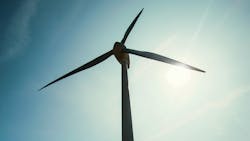Study assessing quayside techniques for managing Celtic Sea floating wind structures
Offshore staff
ESSEN, Germany — RWE is funding a study concerning quayside offload and launching of two types of floating offshore wind platforms in the Celtic Sea, one steel and one concrete, to support next-generation wind turbine generators.
The goal is to maximize involvement of the local supply chain opportunities through using local port infrastructure at Port Talbot and Milford Haven in south and west Wales, two of the country’s deepest ports.
RWE aims to participate in Crown Estate’s UK Round 5 seabed auction to secure at least 1 GW of floating offshore wind in the Celtic Sea, which extends from South Wales and Southwest England to Southeast Ireland.
The study will consider use of the quayside concept use at the Port Talbot facility run by Associated British Ports, which is being upgraded for manufacturing, assembly and integration of floating offshore wind turbines.
It will build on previous studies including one that involved use of the Port of Milford Haven marine simulator. Results will inform activities at other suitable ports in the region such as Port of Pembroke, owned and managed by Port of Milford Haven Authority.
The study will investigate using Sarens’ crane and barge technology alongside Tugdock’s submersible platform concept, applying a hybrid of both approaches. Tugdock’s technology combines a steel frame and patented air lift bags to act either as additional buoyancy or as a submersible platform for lifting or launching heavy marine structures.
10.04.2023
